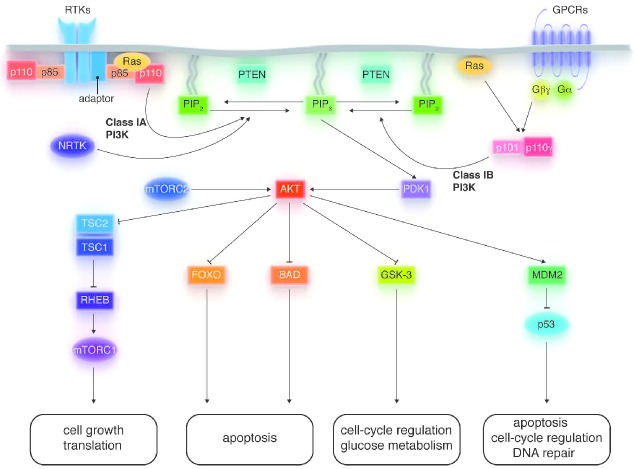Figure 1.
Key features of the phosphoinositide 3-kinase (PI3K) signaling pathway. Upon activation, class IA and B PI3Ks initiate signaling by phosphorylating phosphatidylinositol-4,5-bisphosphate (PI-4,5-P2) to generate phosphatidylinositol-3,4,5-trisphosphate (PIP3), which recruits AKT and 3-phosphoinositide-dependent kinase 1 (PDK1) to the plasma membrane. AKT-mediated phosphorylation can activate (arrows) or inhibit (bars) downstream proteins. PI3K signaling affects cell growth, apoptosis, cell-cycle regulation, glucose metabolism, and DNA repair. Some molecular details have been omitted from this diagram for simplicity.

